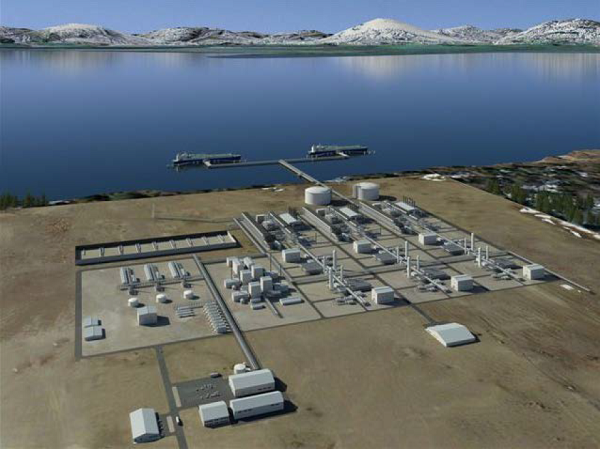The Alaska Gasline Development Corporation (AGDC) has announced a groundbreaking partnership with Glenfarne Energy Transition to advance the $44 billion Alaska LNG project, marking a significant milestone in U.S. energy infrastructure development.
This monumental project aims to export liquefied natural gas (LNG) from Alaska’s North Slope to global markets by the early 2030s.
Key Features of the Project
The Alaska LNG project entails the construction of an 807-mile pipeline designed to transport up to 3.3 billion cubic feet of natural gas per day from Alaska’s North Slope to an LNG export facility in Nikiski, located south of Anchorage.
In addition to the pipeline, the development will include an Arctic Carbon Capture plant, aimed at minimizing the carbon footprint of operations.
AGDC stated that this partnership would position the project as a pivotal player in global LNG supply chains, addressing growing energy demands while incorporating sustainability measures.
Strategic Collaboration
Under the agreement, Glenfarne Energy Transition will lead the development, financing, and construction of the project. Glenfarne brings extensive expertise in natural gas and LNG, with successful projects in both the U.S. and international markets.
“This partnership represents a significant step forward for Alaska LNG,” said Frank Richards, President of AGDC. “Glenfarne’s experience and vision align with our mission to deliver clean and reliable energy to global markets while supporting Alaska’s economy.”
Timeline and Regulatory Approvals
The project is slated to begin natural gas deliveries by 2031, with LNG exports expected shortly thereafter. Originally approved by the Federal Energy Regulatory Commission (FERC) in 2020 during the Trump administration, the project received final legal approval in 2022.
While it has faced environmental opposition, proponents emphasize its potential to strengthen the region’s energy infrastructure and global energy security.
Environmental and Economic Implications
A critical aspect of the project is its focus on reducing environmental impact. The Arctic Carbon Capture plant on the North Slope is designed to lower greenhouse gas emissions, addressing concerns raised by environmental groups.
Additionally, the project is expected to generate significant economic benefits, including job creation and increased revenue for Alaska.
Global Impact
The Alaska LNG project is positioned to enhance the United States’ role in global energy markets. By supplying LNG to Asia and other regions, it could play a vital role in diversifying energy sources and reducing dependency on more carbon-intensive fuels.
Future Outlook
As the Alaska LNG project moves forward, it represents a beacon of innovation in balancing energy development with sustainability.
The partnership with Glenfarne Energy Transition signals a new era of collaboration aimed at addressing both economic and environmental challenges in the energy sector.
For further updates, stakeholders and industry observers will be closely monitoring the project’s progress and its broader implications for global energy markets.
Also Read
Temporary Donut Shortage Hits Dunkin’ Locations in the U.S.
U.S. Passport Drops to 8th Position in 2025 Henley Passport Index: What’s Behind the Shift?

